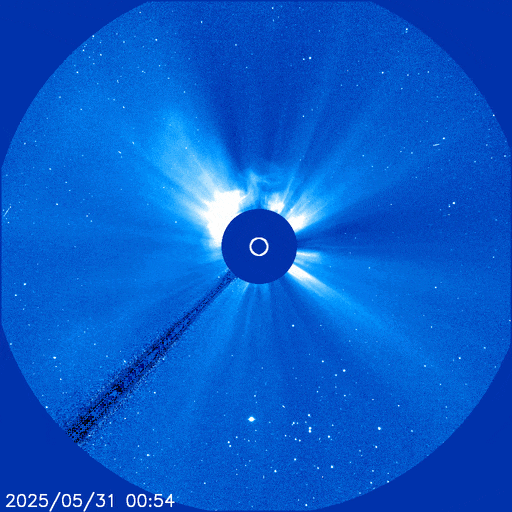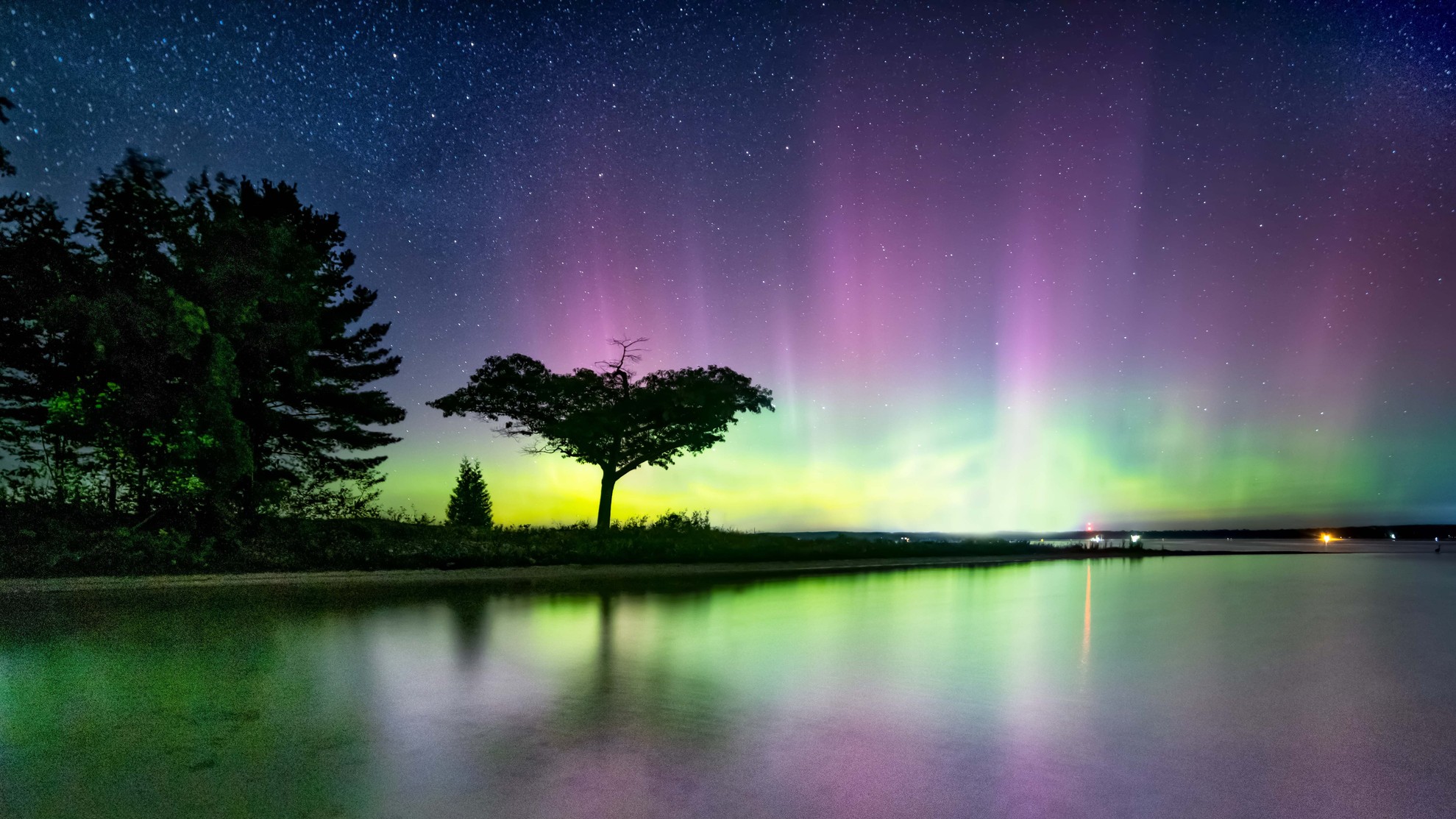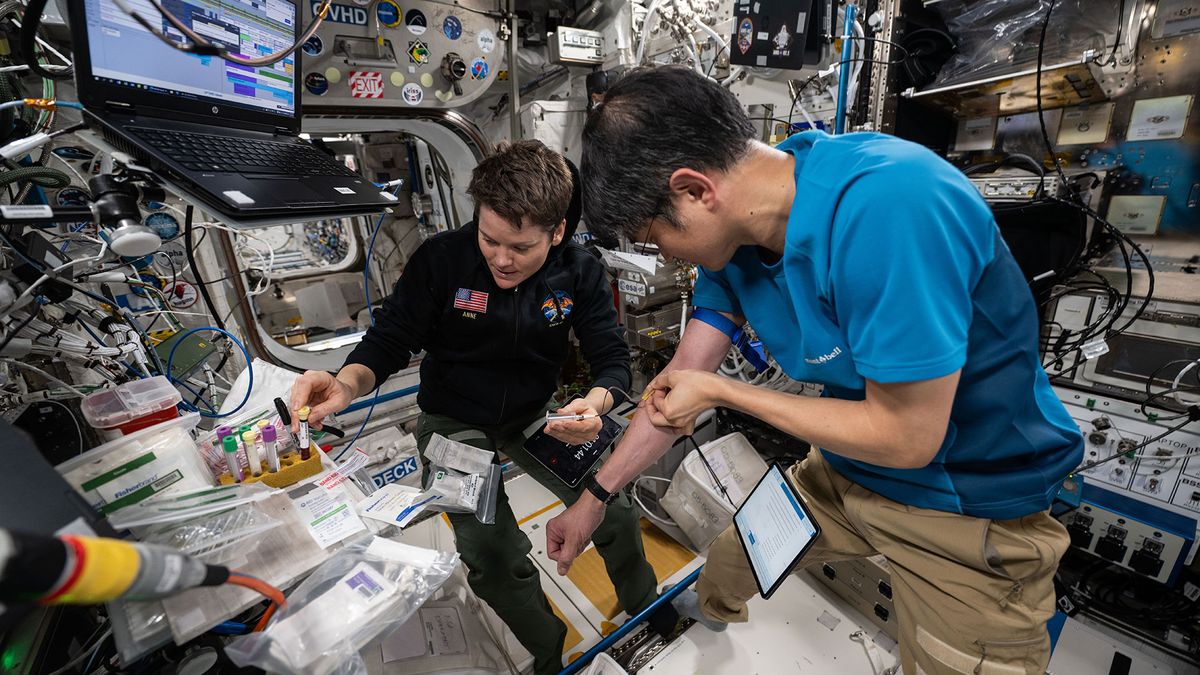Heads up, aurora chasers! A powerful solar storm is on the way.
Space weather forecasters are warning of a strong (G3) geomagnetic storm, with a chance it could reach severe (G4) levels, thanks to a blast of solar material heading straight for Earth. That could mean vibrant northern lights illuminating the night sky as far south as Oregon, Illinois, and potentially even deeper into mid-latitudes like Alabama and northern California overnight tonight.
The incoming coronal mass ejection (CME) — a vast plume of solar material — erupted from the sun in the early hours of May 31, it is currently hurtling towards us at astonishing speeds.
"Our sun finally aims for Earth!" Space Weather Physicist Tamitha Skov wrote in a post on X. But identifying the exact time of when the CME will hit is difficult as a slower solar storm in front might hold up the speedy solar storm behind.
"NASA model predictions show a very fast #solarstorm travelling near 1000 km/s that could hit Earth by midday June 1. A slower storm ahead might cause a slight traffic delay, but G4-levels by June 2 are possible," Skov continues.
Our Sun finally aims straight for Earth! NASA model predictions show a very fast #solarstorm travelling near 1000 km/s that could hit Earth by midday June 1. A slower storm ahead might cause a slight traffic delay, but G4-levels by June 2 are possible. This means #aurora may be… pic.twitter.com/vnxoZf1PeBMay 31, 2025
Geomagnetic storms are classified using a G-scale, which ranks their intensity from G1 (minor) to G5 (extreme). The recent geomagnetic storm watch that the U.K. Met Office Space Weather Operations Centre issued is rated a G4, indicating "severe" storm conditions.
What is CME?

CMEs are large eruptions of plasma and magnetic field from the sun; when they collide with Earth's magnetic field, they can cause geomagnetic storms that trigger auroras, sometimes visible much farther south than usual. With this event, auroras may be visible deep into mid-latitudes, making it a must-watch for northern lights enthusiasts!
When will the northern lights be visible?
The current predictions show the CME to impact Earth in the early hours of June 1 (UTC), so make sure you keep your eyes on the skies as soon as it gets dark tonight! For the best chances of seeing the northern lights, head to a dark location with a good view of the northern horizon.
Get those camera batteries charged and those aurora alerts switched on!
The timing of the CME impacts can vary, so it's important to stay updated on space weather alerts that provide real-time forecasts based on your location. A great option is "My Aurora Forecast & Alerts" (available for iOS and Android). For a deeper dive into space weather conditions, "Space Weather Live" is another excellent choice (available for iOS and Android)
.png)
 German (DE)
German (DE)  English (US)
English (US)  Spanish (ES)
Spanish (ES)  French (FR)
French (FR)  Hindi (IN)
Hindi (IN)  Italian (IT)
Italian (IT)  Russian (RU)
Russian (RU) 







Comments